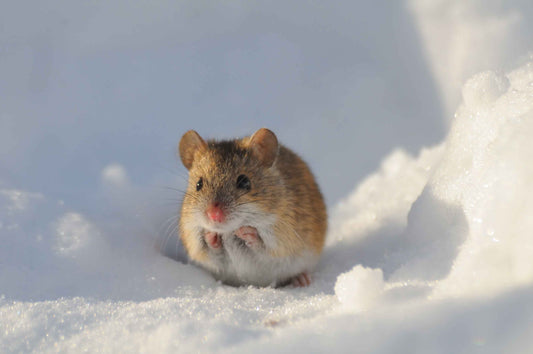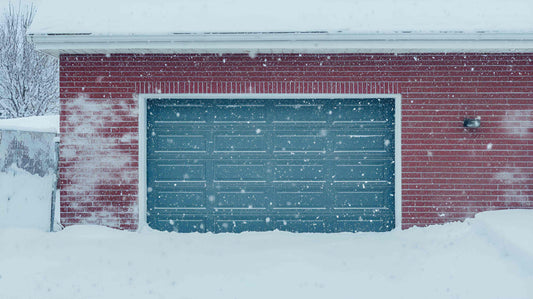
How Much Does It Cost to Repair Rodent Damage to Car?
Share
Rodent damage to your car is no small problem. In the United States alone, it’s estimated to cause nearly $200 million in repair costs annually. Across the Atlantic, a survey in the United Kingdom reported that 9% of car owners experienced rodent-related damage, with costs soaring into the billions globally.
For RV owners, the statistics are even more concerning. According to an RVtravel poll, 30% of respondents reported paying for rodent-related repairs.
But why do rodents target vehicles, and how much is it going to cost your to repair?
In this guide, we’ll explore the reasons behind the issue, the type of damage rodents inflict, and why repair bills can pile up so quickly.
Why Do Rodents Target Vehicles?
Rodents aren’t actively trying to be malicious, but your vehicle offers them everything they need to thrive during the colder months. Here’s why:
- Safe shelter: Your vehicle provides easy protection from the elements and any natural predators.
- Nesting material: Upholstery, insulation, and other vehicle components are perfect for building warm, cozy nests.
- Food sources: Even the smallest scraps can draw a rodent. Food crumbs, trash, and soy-coated wiring can attract a hungry guest.
- Easy access: You’d be shocked how many tiny hideaways there are for a mouse to enter through, including vents, pipes, and engine bays.
Once inside your vehicle, mice and other rodents will chew. It’s in their nature. And those big teeth can do major damage. The best defense is prevention.

Types of Damage Caused by Rodents
Most rodent damage will occur unseen, only to be found once your vehicle begins to malfunction. Knowing what signs to look for can make all the difference:
- Chewed wiring: Nibbled and chewed-through wiring is one of the most common rodent-related damages, leading to short circuits and electrical failures.
- Mechanical failures: Belts, hoses, and other essential engine components are all at risk of mouse damage and can lead to massive repair bills.
- Interior damage: Rodents will destroy upholstery, air filters, insulation, and HVAC systems while nesting.
- Contamination: Droppings, urine, and debris can contaminate air circulation systems, posing health risks and pricy deep cleanings.
In worst case scenarios, mouse damage can total a car, spark a fire, or lead to dangerous accidents. Trust me, I know …

Why Are Repairs So Expensive?
Whether you’re dealing with a collectible, your daily driver, an RV, or camper, our vehicles are all complicated pieces of machinery. And unfortunately, mice and other small rodents know just how to target the most-expensive components.
Extensive Labor Costs:
A mouse will burrow into hard-to-reach areas of your vehicle, making it very difficult for a technician to diagnose the full extent of the damage. Sometimes, mechanics may be forced to take apart large portions of the car to find the problem.
There are countless scenarios where repair bills have ballooned over $10,000 due almost entirely to labor costs. Quite often, labor can be responsible for more than 75% of the cost.
Specialized Repairs:
Many rodent-related repairs require an expert hand and therefore higher costs. Those special skills are crucial to making sure the work gets done right.
- Electrical systems: Modern cars have intricate electrical systems that can’t be easily “fixed.” Repairs may require complicated rewiring, recalibration, or even full replacement.
- HVAC systems: Mice are known for nesting in air vents, necessitating thorough cleaning and filter replacements to remove odors, droppings, and other health hazards.
- Interior restoration: Torn upholstery or chewed seat foam often calls for custom repairs, especially in high-end or vintage vehicles.
- Insulation replacement: Damage to your vehicle’s insulation can lead to your entire vehicle being pulled apart and placed back together.
Replacement Parts:
Those who store their vintage or collectible vehicles for long stretches of time might find themselves in a world of hurt. Specialized and proprietary parts are not easily replaceable and will add to the bill.
Many Tesla owners have found themselves facing pricy repairs after mice have found comfort near their warm, charging batteries before chewing through complex wiring.
Compounding Problems:
Unfortunately, where one wire has been chewed, there’s likely another. Rodent damage rarely occurs in isolation — nesting debris, shredded insulation, and damaged electrical systems can mount quickly.
- Electrical shorts: A damaged wire can cause short circuits, damaging control modules, sensors, or other parts of your electrical system.
- Engine overheating: Chewed hoses can cause leaks in coolant or fuel lines, leading to engine damage or complete failure.
- Secondary damage: Nesting materials can ignite if they come into contact with hot engine parts, causing fires and further engine damage.
- Repeat repairs: If you don’t eliminate the source of the rodent problem, your first repair won’t be your last.
Will Insurance Cover Your Repairs?
In most scenarios, comprehensive auto insurance will cover rodent damage — but not in every scenario. If you want to know more, check out our blog on rodent-related coverage to learn more about insurance policies and when your damage might be excluded.

Be Proactive by Installing a Box-Kat
The best way to deal with a mouse problem is to prevent it from happening in the first place.
The Box-Kat mouse barrier is your car’s ultimate defense against rodents. This patented product creates a physical barrier that mice can’t jump over or burrow under, keeping your vehicle safe from damage. Whether you’re safeguarding your personal car, trailer, RV, or van, Box-Kat offers peace of mind and long-term protection.
Invest in a Box-Kat today and keep your car ready for the road — not the repair shop.



